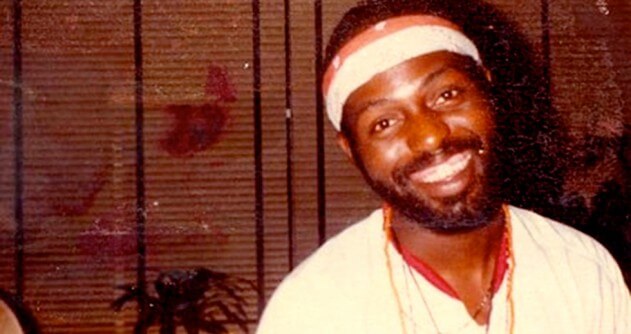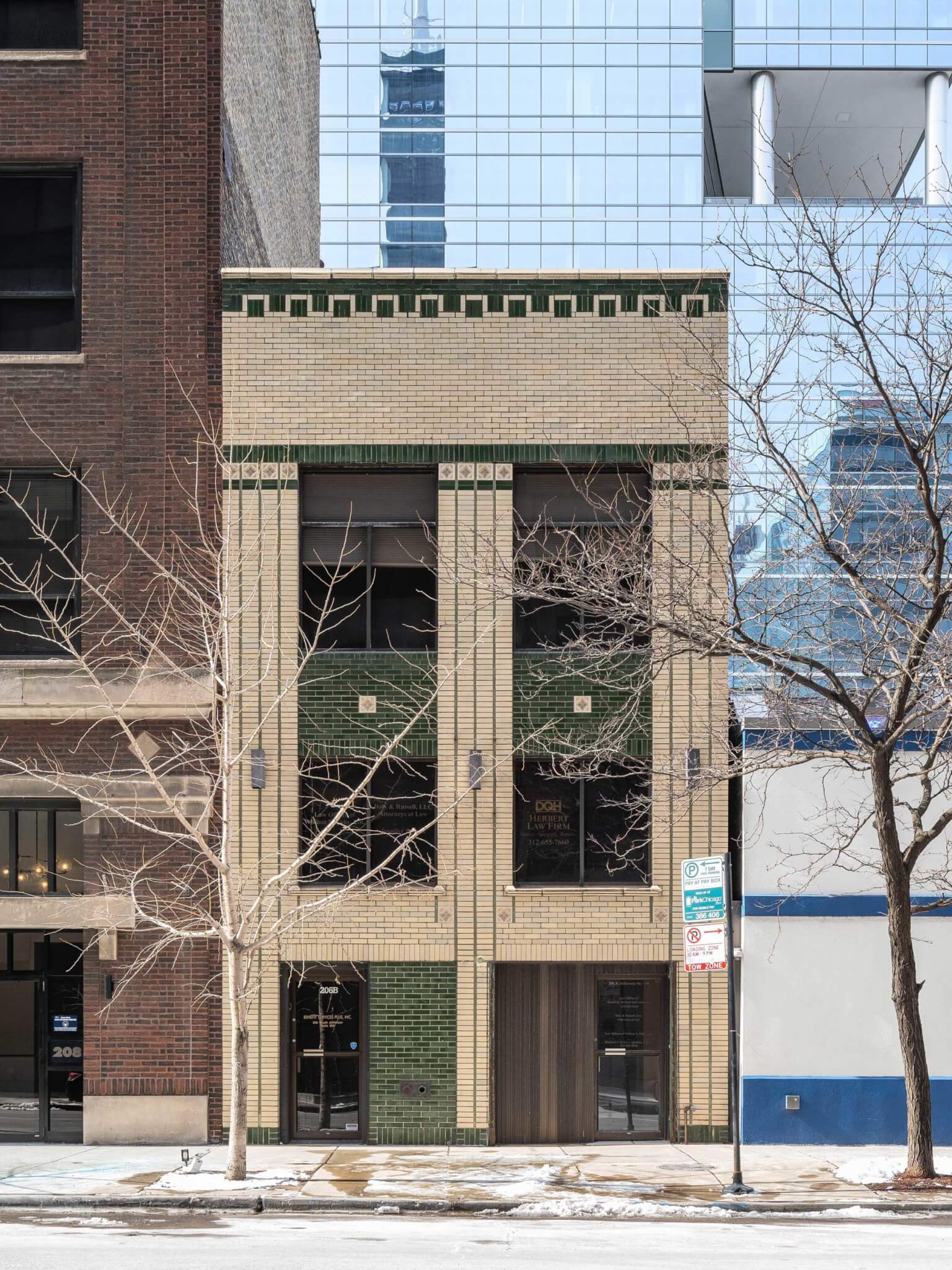Drawn in by the propulsive four-on-the-floor bass that could be heard blocks away through the then-derelict streets of Chicago’s West Loop, in the late 1970s and early ’80s young club-goers gathered at a modest but stylish three-story former industrial warehouse where the party raged from midnight until 8:00 a.m. or later, the punch was spiked with LSD, throngs of dancers felt the wooden floor inside bounce and heave with their movement, and a new sound was created that would take over the world.
This 1906 building, designed by the largely forgotten industrial architect Vernon Behel, became home to the legendary DJ Frankie Knuckles, whose nightlife soundscapes established this club, called The Warehouse, as the birthplace of house music, which got its name after Behel’s architectural artifact.

Earlier this month, Chicago historic preservation nonprofit Preservation Chicago added The Warehouse at 206 S. Jefferson to its annual Chicago Seven list of the most endangered historic buildings in the city. The building was sold to a new owner in December 2022, and Preservation Chicago’s efforts to contact them to learn their intentions with the building didn’t yield a response, creating concern for its future.
Despite its age, The Warehouse building has no historical protections and is not subject to any demolition permit delays. “We want to urge the city of Chicago to start taking steps toward designating The Warehouse as an official Chicago landmark,” said Max Chavez, director of research & special projects at Preservation Chicago. To that end, Preservation Chicago set up a Change.Org petition to urge the city to take action. Chicago landmark designations obligate building owners to receive approval from the city’s landmarks commission before making exterior changes to their building. A Landmarks Commission spokesperson declined to comment on The Warehouse pending ongoing staff research.
The building’s new owner is a holding company attached to Shneur Nathan and Avi Kamionski, founders of a law firm (Nathan and Kamionski) with offices in Chicago. Nathan told AN he plans to keep the building intact, as law offices, with a light interior refresh. He declined to comment on whether they would pursue landmarking.
Nightlife promoter Robert Williams moved to Chicago from New York City and opened The Warehouse in 1977, a membership-only club popular with the Black LGBTQ community. He recruited fellow New Yorker Frankie Knuckles to spin. Knuckles began concocting a mix of disco, R&B, funk, and European electronic pop music built on a chassis of drum machines and synthesizers that would form the backbone of house music, a genre that has since launched many other forms of electronic dance music. (One of Williams’s first encounters with Knuckles came after he was busted for stealing doughnuts from a truck at 5:00 a.m. after a long night of clubbing. While the teenaged Knuckles was sobbing in a jail cell, Williams walked in as his assigned juvenile counselor.) Knuckles was as surprised as anyone when the records he spun began coalescing into new genre named after his club. “If Frankie was here, he’d probably say ‘I was just playing records there,’” said Frederick Dunson, a friend and business partner of Knuckles. The influential DJ died in 2014, and Dunson founded the Frankie Knuckles Foundation the following year.
For Dunson and others, The Warehouse was more than place to party. Some gay clubs in the 1970s had discriminatory door practices thar barred Black club-goers, so there was intense pressure—and demand—to create a scene for themselves. In mid-1970s, the largest gay disco in Chicago required ID for everyone and passports for Black people to walk through the door. “[The Warehouse] was a place where people could be themselves and be comfortable,” Dunson said. “It was a safe space for marginalized individuals, such as myself: Black and Brown gay men.”

The Warehouse’s inclusion in the Preservation Chicago list addresses a blind spot in historic preservation, weighing the history of ignored demographics locked out of the power and capital to commission their own works of grand architecture alongside canonical presentations of architectural style, history, and lineage. “This isn’t a story you get to tell terribly often in historic preservation,” says Chavez. “We know now that saving our historic built environment goes beyond just saving places that are pretty. There are cultural stories that took place in unremarkable buildings; vernacular structures that need protecting, too.”
But it would be a stretch to call 206 S. Jefferson architecturally “unremarkable.”
Though it was designed by an architect who mostly focused on industrial buildings, 206 S. Jefferson may be Behel’s most exuberant extant work. Its front facade is composed of buff brick with green glazed bricks, deployed with graphic effect. Vertical lines of green brick mimic the flutes on a column along the building’s three vertical piers, and hint at column capitals at the top. Just below the building’s roof, the bricks sketch out a 2D approximation of Italianate roof brackets. The blocky, modular details appear at the resolution of a computer punch card; they are playful and exaggerated as they nod toward modernism or even postmodernism in its comical application of historical detail. “When we first started looking at it, we thought, ‘Is this art deco?’” said Chavez. “It seems little bit ahead of its time.”
During its nightclub days, The Warehouse’s DJ booth was on a loading dock at the back of the dancefloor. There was almost no furniture or decor on the main level, just a dancefloor, black painted walls, a wall of speakers, and strobe lights. A lounge upstairs offered a spot to relax. Knuckles DJed there until 1982, when he started his own club called the Power Plant; his replacement, Ron Hardy, was similarly visionary.
The warehouse’s inherent flexibility is what secured its future as a dance club (and law offices), and Preservation Chicago hopes that this will be an opportunity to recognize Chicago’s cultural history in a way that’s relatively rare. “Chicago has such a strong musical heritage, and we talk often in our office about how it’s not necessarily represented in the built environment,” said Chavez. “It’s very rare to have a spot where you can point to a specific place and say, ‘This type of music was born here.’ This is where house music was born.”
Chavez said Preservation Chicago would love for the building to one day be a cultural destination like a museum but would be happy to see it maintained as law offices as well. The organization has started an online petition to raise support for landmarking the building.
Dunson told AN his organization would likely be in favor of a landmark designation but didn’t want to comment further, pending input from The Warehouse’s new owners. “Whatever road we walk down, we’re going to need the help of the Chicago community,” he said.
Zach Mortice is a Chicago-based design journalist and critic focused on architecture and landscape architecture’s relationship to public policy.











